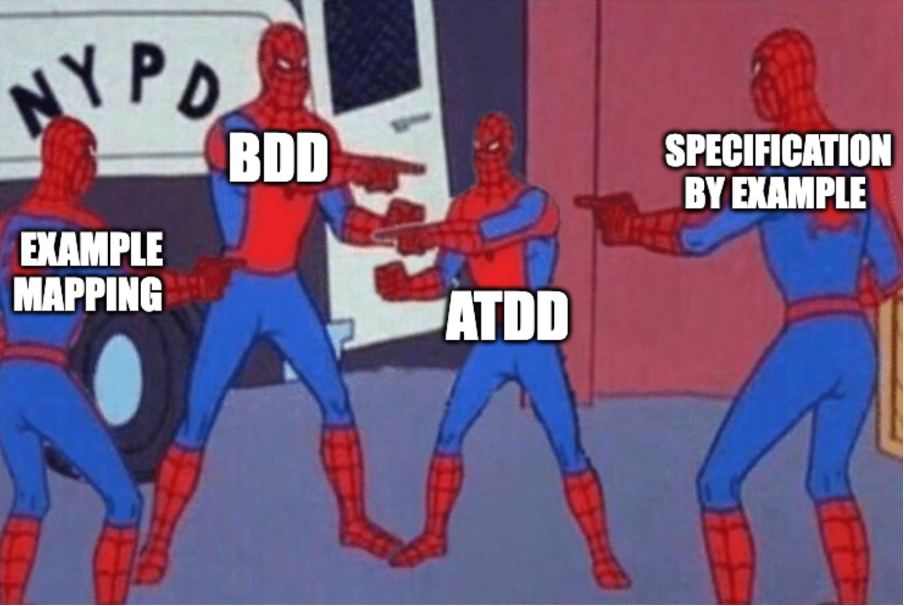Software Architecture for Developers
軟體架構開發指南
Why We Need Systems Thinking
為何我們需要系統思維

Architecture isn’t just about layers and patterns. It’s about how developers think, interact, and build — especially in a world of interconnected applications.
架構不僅僅關乎層級與模式,它更關乎開發者如何思考、互動與建置 —— 特別是在這個應用程式相互連結的世界中。
Architecture Is How a System Thinks
架構決定系統的思考方式
To many developers, “architecture” sounds like something abstract — maybe even bureaucratic. It brings to mind diagrams, frameworks, and a few people in a corner office deciding where the APIs go.
對許多開發者而言,「架構」聽起來很抽象 —— 甚至可能帶點官僚氣息。它讓人聯想到圖表、框架,以及幾個坐在角落辦公室裡決定 API 去向的人。
But what if we zoom out?
但如果我們拉遠視角來看呢?
What if we viewed architecture not as a static diagram, but as the collective intelligence of a living system — one where each component, developer, and decision is dynamically connected?
如果我們不將架構視為靜態圖表,而是看作一個活躍系統的集體智慧 —— 其中每個元件、開發者和決策都動態地相互連結呢?
This is where systems thinking changes the conversation.
這正是系統思維改變對話的地方。
Instead of treating architecture as a set of rules or layers, it becomes a way to think about flows, interactions, and adaptability. And in that context, developers of all kinds are no longer passive consumers of architecture — they are active participants in a continuously evolving system.
架構不再只是一套規則或分層,而成為思考流程、互動與適應性的方式。在這樣的脈絡下,各種開發者不再是被動的架構接受者 —— 他們是持續演進系統中的主動參與者。
Let’s break down how different developers see architecture — and how that perception changes when we embrace a systems mindset with bindable components and message moderation at the core.
讓我們來剖析不同開發者如何看待架構 —— 當我們以系統思維為核心,擁抱可綁定元件和訊息調節時,這種認知會如何改變。
The Junior Developer — Navigating the Maze
初階開發者 — 在迷宮中尋找方向
Junior developers often inherit the system without context. Architecture can feel like a maze of services, folders, frameworks, and “best practices” that no one explained.
初級開發者往往在缺乏背景脈絡的情況下接手系統。架構對他們而言,可能像是一座由服務、資料夾、框架和「最佳實踐」組成的迷宮,卻無人解釋其緣由。
In traditional layered architectures, this can feel rigid or unintuitive. But in a system built around bindable components, discovery becomes part of the learning process.
在傳統的分層架構中,這種感受可能顯得僵化或不直觀。但在以可綁定元件建構的系統中,探索發現本身就成了學習過程的一部分。
Each component has a well-defined interface and can be understood in isolation — making it easier for juniors to explore, test, and contribute without fear of breaking the world.
每個元件都具備明確定義的介面,且能獨立理解 —— 這讓初級開發者能更輕鬆地探索、測試與貢獻,無需擔心破壞整個系統。
With systems thinking, juniors can learn by tracing message flows, not struggling through frameworks.
透過系統思考,初級開發者能藉由追蹤訊息流來學習,而非在框架中掙扎。
The Mid-Level Developer — Seeking Patterns and Autonomy
中階開發者 — 探索模式與追求自主性
Mid-level developers start asking deeper questions:
中階開發者開始提出更深入的問題:
- “Why are these services tightly coupled?”
「為什麼這些服務緊密耦合?」 - “Why does every change require touching five systems?”
「為什麼每次變更都要動到五個系統?」 - “How do we scale this without rewriting everything?”
「我們要如何擴展這個系統,卻不必全部重寫?」
In a traditional setup, these questions often run into architectural walls. But in a system with loosely coupled components and message moderation, answers become composable.
在傳統架構中,這類問題往往會碰觸到系統架構的極限。但在鬆散耦合元件與訊息調節的系統裡,解決方案變得可以自由組合。
Developers can extend the system by binding new components, or updating old ones. They can shift focus from structure to flow — analyzing how data and intent move across the system, and how the system reacts to change.
開發者能透過綁定新元件或更新舊元件來擴展系統。他們可以將焦點從結構轉向流程 —— 分析資料與意圖如何在系統中流動,以及系統如何因應變化。
Architecture becomes fluid, with boundaries shaped by behavior, not by code dependencies.
架構因此變得流動,邊界由行為定義,而非程式碼相依性。
The Senior Developer — Thinking in Interactions
資深開發者 — 互動思維
Senior developers start thinking about systems as ecologies, not just tech stacks.
資深開發者開始將系統視為生態系,而不僅僅是技術堆疊。
They see architecture as the choreography of services, events, and responsibilities — and recognize that rigid architectural roles often limit adaptability.
他們將架構視為服務、事件與職責的編排藝術,並認知到僵化的架構角色往往會限制適應性。
With bindable components and message moderation, they gain something more:
透過可綁定元件與訊息調節機制,他們獲得了更重要的能力:
- Components that can be composed or replaced without re-architecting the system
無需重新架構系統,就能組合或替換元件 - Moderation that makes messaging visible, traceable, and adaptable
讓訊息傳遞可見、可追蹤且具適應性的調節機制 - A clear separation between what a component does and how it interacts with others
明確區分元件功能與互動方式
This aligns perfectly with systems thinking, where resilience and adaptability matter more than static diagrams.
這完全符合系統思維,其中韌性與適應性比靜態圖表更重要
Senior developers stop architecting systems like buildings — and start designing them like ecosystems.
資深開發者不再像建造建築般設計系統,而是開始像設計生態系般構思
The Frontend Developer — Decoupling from Backend Decisions
前端開發者 — 與後端決策解耦
Frontend developers often bear the brunt of poor architectural choices made elsewhere: brittle APIs, tightly coupled logic, or inconsistent data flows.
前端開發者往往首當其衝地承受其他環節不良架構決策的後果:脆弱的 API、緊密耦合的邏輯,或是不一致的數據流。
In systems built on bindable components, frontends interact via messages — not contracts hardwired to specific backends. This decoupling means they can bind to the right data and behaviors without waiting on changes to monolithic backend services.
在基於可綁定元件的系統中,前端透過訊息進行互動 —— 而非與特定後端硬性綁定的合約。這種解耦意味著它們能直接綁定正確的數據與行為,無需等待單體式後端服務的變更。
Frontend developers can use all the same moderated message calls to the backend as the backend developers use. They gain more autonomy, clearer data flows, and the ability to evolve the UI in tandem with evolving business needs.
前端開發者能使用與後端開發者完全相同的調節訊息呼叫後端。他們獲得更高的自主權、更清晰的數據流,以及讓使用者介面隨業務需求同步演進的能力。
Message moderation acts as a translator and coordinator, freeing the frontend from backend bottlenecks.
訊息調節機制扮演著翻譯與協調者的角色,使前端能擺脫後端的瓶頸限制。
The Backend Developer — Modeling Behaviors, Not Just Entities
後端開發者 — 行為建模,不僅是實體
Backend developers are often closest to architectural patterns like DDD, microservices, or event sourcing. But in many systems, these abstractions collapse under pressure due to tight coupling or implicit dependencies.
後端開發者通常最熟悉領域驅動設計 (DDD)、微服務或事件溯源等架構模式。但在許多系統中,這些抽象概念會因緊密耦合或隱性依賴而在壓力下崩解。
With systems thinking, bindable components, and message moderation the backend shifts from being a maze of service endpoints and transactional logic to a network of purpose-driven behaviors that can be independently composed.
透過系統思維、可綁定元件和訊息調節,後端從原本由服務端點和交易邏輯構成的迷宮,轉變為能獨立組合、目標導向的行為網絡。
Each component becomes a behavioral contract — a self-contained unit that knows how to perform its job and how to participate in the system through moderated messaging.
每個元件都成為一份行為契約 —— 一個自包含的單元,既知道如何執行自身工作,也懂得透過調節訊息來參與系統運作。
Developers think in terms of messages and outcomes, not just database transactions.
開發者開始以訊息和結果為思考單位,而不僅是資料庫交易。
The Platform Engineer — Operational Harmony
平台工程師 — 運維協調
For operations and platform teams, traditional architectures can become fragile under load or growth. Every new dependency increases complexity. Every tightly coupled service introduces fragility.
對於營運和平台團隊來說,傳統架構在負載或成長情況下容易變得脆弱。每個新增的相依性都會增加複雜度,每個緊密耦合的服務都會帶來脆弱性。
Message-moderated architectures bring clarity and control. Bindable components interact via managed, observable flows. Failures can be isolated, retried, rerouted, or compensated.
訊息調節式架構能帶來清晰度與控制力。可綁定元件透過受管理、可觀察的流程進行互動。故障可以被隔離、重試、重新路由或補償。
Systems evolve from unpredictable chains of calls into resilient, observable webs of intent.
系統從不可預測的呼叫鏈,進化為具有韌性且可觀察的意圖網絡。
Moderation is the missing piece that turns event-driven or service-oriented designs into truly operational systems.
調節機制正是將事件驅動或服務導向設計轉變為真正可運作系統的關鍵要素。
Why This Shift Matters 為何這個轉變很重要
In traditional architecture, developers are often stuck reacting to constraints imposed by the system’s structure.
在傳統架構中,開發人員往往受困於系統結構所施加的限制。
But when we embrace systems thinking, and shift from fixed architecture to fluid component interaction, something changes:
但當我們擁抱系統思維,從固定架構轉向流動的元件互動時,某些改變就會發生:
- Architecture becomes collaborative
架構變得具有協作性 - Change becomes safer 變更變得更安全
- Growth becomes organic 成長變得自然有機
And most importantly: developers at every level gain clarity, autonomy, and the ability to reason about the whole system — not just their piece of it.
最重要的是:各層級的開發者都能獲得清晰度、自主性,以及理解整個系統的能力 —— 而不僅限於他們負責的部分。
Final Thought
Software architecture isn’t just a technical concern. It’s a human one.
軟體架構不僅是技術問題,更是人性問題。
It’s about how we collaborate, how we design, how we evolve. Systems thinking, bindable components, and message moderation aren’t just implementation choices — they’re ways of reasoning about systems: as living, adapting, discoverable ecosystems.
這關乎我們如何協作、如何設計、如何演進。系統思維、可綁定元件和訊息調節不僅是實作選擇 —— 它們更是理解系統的方式:將系統視為具有生命力、能適應、可探索的生態系。
Whether you’re building a UI, a service, or a platform — you’re not just writing code. You’re participating in the system’s architecture.
無論你正在建構使用者介面、服務還是平台 —— 你不只是在寫程式碼,你正在參與系統架構的塑造。
And you can have the power to shape it into something truly amazing.
而且你有能力將它塑造成真正令人驚嘆的成果。








